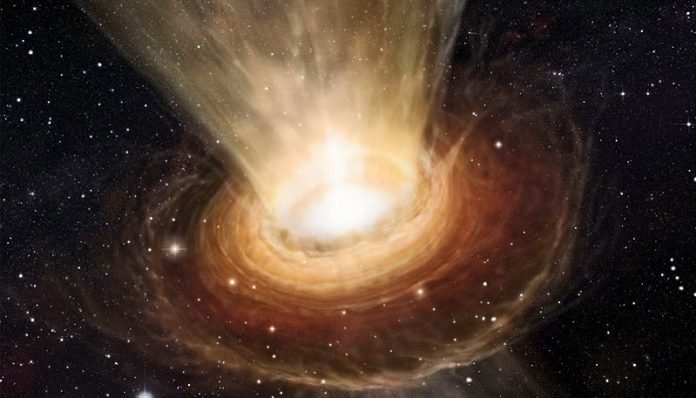
In a groundbreaking study, scientists have used the James Webb Space Telescope (JWST) to capture images of a young star system in the process of forming planets.
This discovery gives us new clues about how planets like those in our own solar system come to be.
At the center of this story is a young star named T Cha, surrounded by a cloud of gas and dust. This cloud, or circumstellar disk, is where planets start their lives.
The JWST has shown us pictures of this disk as it begins to lose its gas into space. This is a crucial stage in the birth of planets.
Naman Bajaj, a student from the University of Arizona, explains that understanding when the gas disappears helps us know how long future gas giants (like Jupiter or Saturn) have to form.
The JWST’s detailed images of these disks around young stars are helping scientists uncover the secrets of planet formation.
Planets form from tiny dust particles in the disk around a young star. These particles stick together over time, creating larger bodies called planetesimals, which eventually become planets.
The type and size of the planets depend on how much material is in the disk and how long it stays there.
The discovery focuses on the T Cha star, which is much younger than our sun. It has a disk around it with a huge gap of dust, about 30 times the distance from the Earth to the sun.
For the first time, scientists were able to see the gas slowly leaving this disk, a process essential to planet formation.
They used the light emitted by neon and argon gases as a “fingerprint” to study this process.
The team, led by Andrew Sellek from Leiden University, also ran simulations to compare with their observations. They found that the bright light from the star could explain how the gas is dispersed. They estimate that the amount of gas leaving the disk each year is about the same as the mass of Earth’s moon.
This isn’t the first time neon has been used to study space. It was first discovered as a way to trace gas movement in space by Ilaria Pascucci using the Spitzer Space Telescope.
But finding neon and double-ionized argon in a low-mass disk like T Cha’s is new and exciting. It could change how we understand the clearing of gas from disks where planets form.
Moreover, the inner part of the T Cha disk seems to be changing rapidly, within just a few decades.
Comparisons between recent JWST observations and older ones from the Spitzer Telescope show differences, suggesting the disk has lost some of its mass. This hints that we might see the end of the dust in T Cha’s inner disk within our lifetimes.
Researchers from various institutions, including the University of Arizona and the SETI Institute, contributed to this study.
Their work is helping us understand the early stages of planet formation and providing new insights into the history and development of our own solar system.



